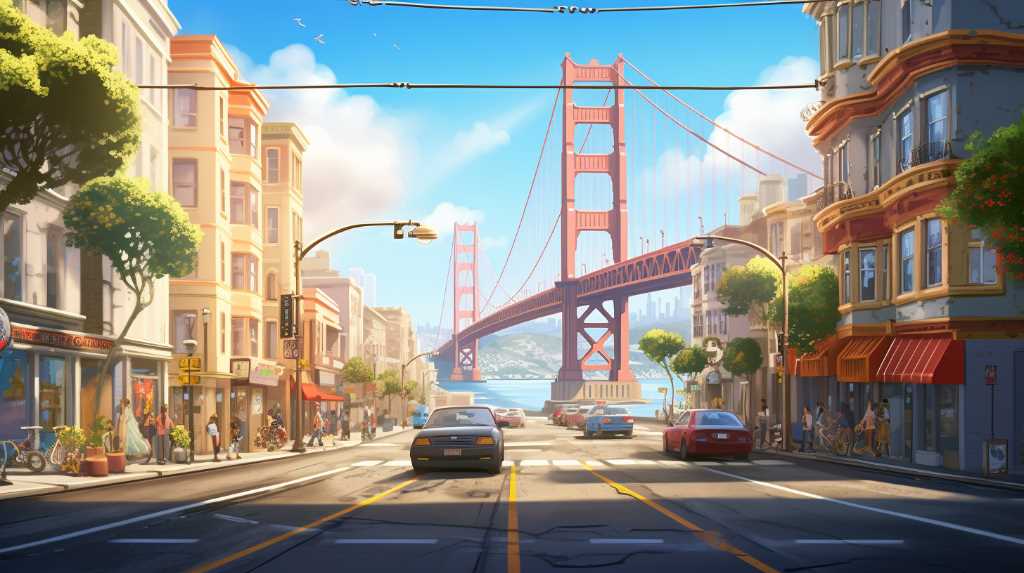
Understanding the intricacies of San Francisco’s traffic laws and regulations is essential for ensuring safety and compliance on its diverse urban streetscape. Given the city’s unique topography, with steep inclines and frequent hills, specific rules have been established to address parking, navigating slopes, and interacting with cable cars. Additionally, San Francisco’s commitment to a pedestrian and cyclist-friendly environment necessitates a thorough comprehension of right-of-way protocols.
This guide aims to provide a concise overview of the key traffic regulations that drivers, cyclists, and pedestrians must adhere to. It is imperative for all road users to acquaint themselves with these norms to contribute to the seamless flow of traffic and to uphold the city’s dedication to road safety.
Navigating Steep Inclines
When driving in San Francisco, you have to follow certain rules because of the steep hills. Some hills are really steep, with slopes over 30%. To stay safe and follow the law, drivers should shift to lower gears when going down these hills. This helps them control the car better and stops the brakes from wearing out too fast.
Also, there’s a law about how to park on hills. If you’re parking downhill, turn your wheels toward the curb. If you’re parking uphill, turn them away from the curb, even if there’s no curb there. This is really important because it stops your car from rolling into the street if the brakes give out.
It’s not just about following the law; it’s about keeping everyone safe. This means drivers need to pay extra attention and be in control of their cars in a city with so many hills.
Parking on Hills
When you park on a steep street in San Francisco, it’s really important to park your car the right way to follow the law and keep your car from rolling away.
The city says that if you’re on a slope steeper than 3%, you need to turn your wheels so if your brakes stop working, your car won’t roll into traffic.
Point your wheels toward the curb if you’re going downhill and away from the curb if you’re going uphill.
Always use your parking brake too.
If there’s no curb, point your wheels toward the side of the road.
Doing this helps prevent accidents and keeps everyone and their cars safe.
Right-of-Way Rules
In San Francisco, it’s really important to know who has the right to go first on the busy streets. These rules help prevent accidents and keep everyone safe.
For example, if you’re at a crossroads with no lights or signs, you should wait for cars already in the middle to go first. People walking have priority at crosswalks and corners, which makes sense because a lot of people walk around the city.
Also, if you’re turning left, you need to let cars coming towards you or turning right go before you. These aren’t just tips; they’re actual laws that help cars and people move around smoothly and safely.
Cyclists and Pedestrians
In San Francisco, there are strict rules to keep cyclists and people walking safe in busy traffic. Bikers can use the whole lane, but they must follow the same road signs and lights that cars do. The city has painted bike lanes and ‘sharrows’ (shared lane arrows) to remind drivers to give bikers enough room.
People walking are very important in San Francisco’s traffic plans. They are protected by laws that make sure cars stop at crosswalks and by curb extensions which make them more visible to drivers. The traffic lights at intersections give people plenty of time to cross safely, showing that the city cares about keeping pedestrians safe.
For example, if you’re biking in San Francisco, you’ll see bike lanes marked in green on some streets. This is to help drivers see where they should expect cyclists. If you’re walking, you might notice that the pedestrian signal gives you a head start before cars get the green light. This extra time helps make sure you can cross more safely.
It’s all part of how the city is designed to protect people who aren’t in cars.
Cable Car Interactions
When you’re driving in San Francisco, you need to be extra careful around the famous cable cars because they have special traffic rules. These cable cars are not just for tourists—they’re a key part of how people get around the city. They even have the right-of-way in certain situations to keep them moving smoothly and on time.
For example, if a cable car is picking up or dropping off passengers, all cars around it have to stop and wait until it starts moving again. This rule keeps everyone getting on or off the cable car safe. So, keep an eye out for the cable car’s bell—it’s your signal to slow down and possibly stop.
Following these rules is really important to keep traffic in San Francisco running well with cars, cable cars, and other ways of getting around all sharing the roads.
Conclusion
To keep everyone safe and traffic moving smoothly, it’s really important to follow the traffic rules in San Francisco. The city has lots of hills and special rules about who should go first, and you also need to watch out for cable cars.
By following these rules, we can avoid problems and make sure cars, bikes, and people walking can all get along on the streets.